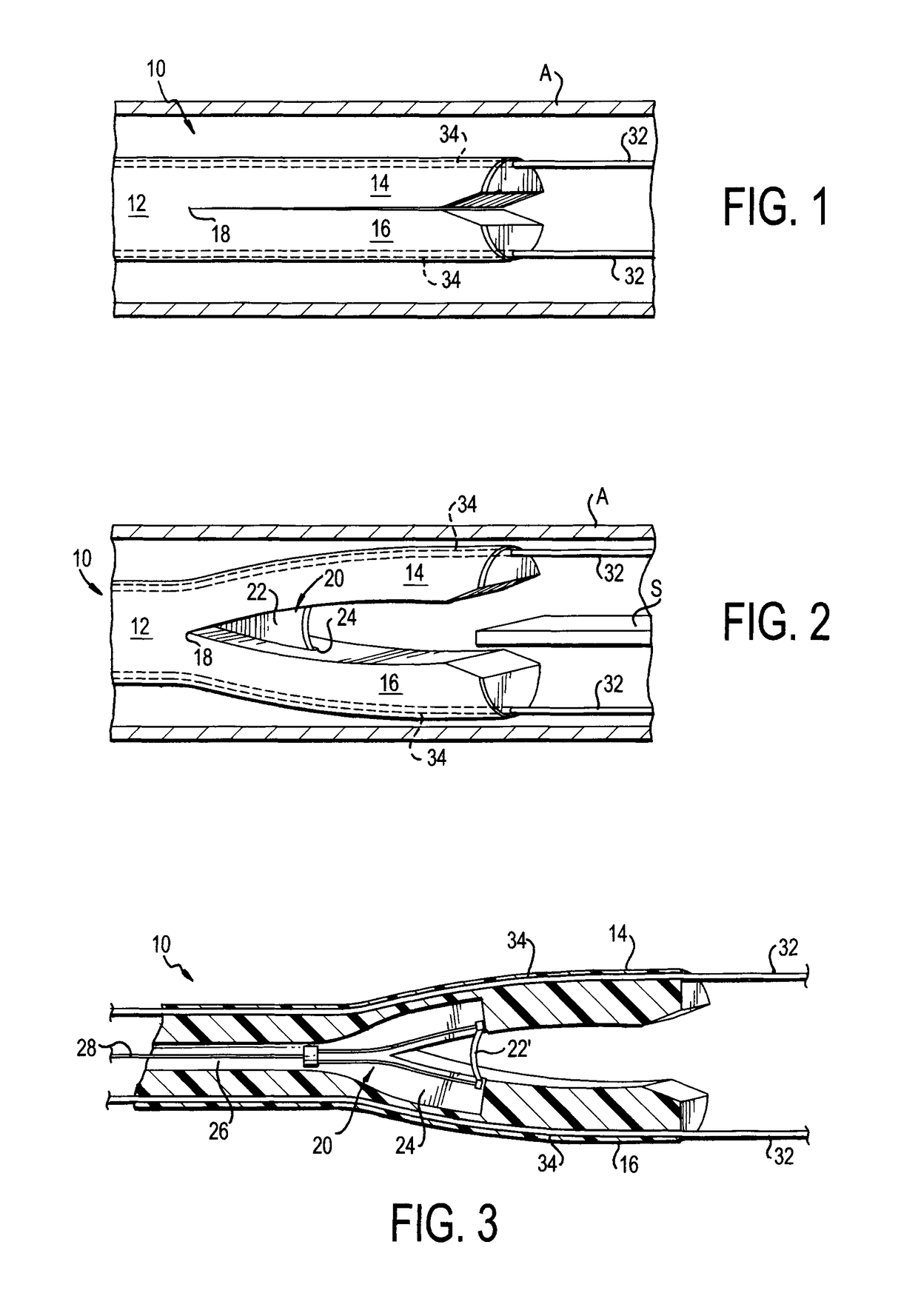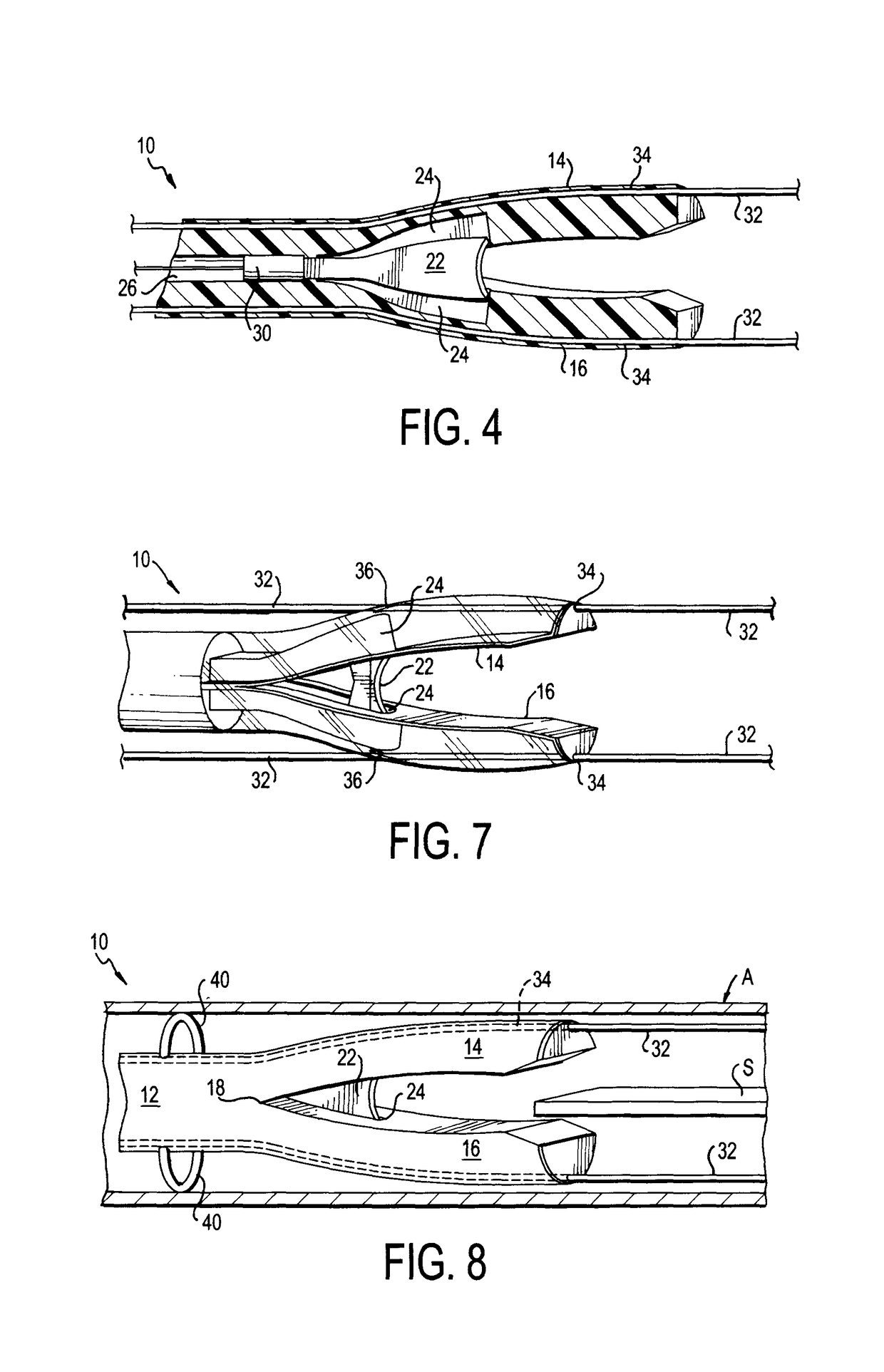Septotomy catheter for aortic dissection
a technology of aortic dissection and a catheter is applied in the field of aortic dissection medical methods and devices, which can solve the problems of affecting the treatment of type b dissection, and affecting the treatment effect, so as to avoid the development of an aneurysm, improve the treatment effect, and improve the effect of aortic dissection
- Summary
- Abstract
- Description
- Claims
- Application Information
AI Technical Summary
Benefits of technology
Problems solved by technology
Method used
Image
Examples
Embodiment Construction
[0025]The present invention will be better understood with reference to the following description taken in combination with the drawings. For the purpose of illustration, there are shown in the drawings certain embodiments of the present invention. In the drawings, like numerals indicate like elements throughout. It should be understood, however, that the invention is not limited to the precise arrangements, dimensions, and instruments shown:
[0026]FIG. 1 illustrates a view of a catheter within a blood vessel (the blood vessel shown in section), the catheter traversing over guidewires and shown in a closed, non-cutting configuration, in accordance with one embodiment of the present invention;
[0027]FIG. 2 illustrates a view of the catheter of FIG. 1, still within the blood vessel and traversing guidewires, now with distal arms opening and separated, while guided by the guide wires, providing that a cutting component within the arms receive and engage an edge end of a septum;
[0028]FIG....
PUM
 Login to View More
Login to View More Abstract
Description
Claims
Application Information
 Login to View More
Login to View More - R&D
- Intellectual Property
- Life Sciences
- Materials
- Tech Scout
- Unparalleled Data Quality
- Higher Quality Content
- 60% Fewer Hallucinations
Browse by: Latest US Patents, China's latest patents, Technical Efficacy Thesaurus, Application Domain, Technology Topic, Popular Technical Reports.
© 2025 PatSnap. All rights reserved.Legal|Privacy policy|Modern Slavery Act Transparency Statement|Sitemap|About US| Contact US: help@patsnap.com



